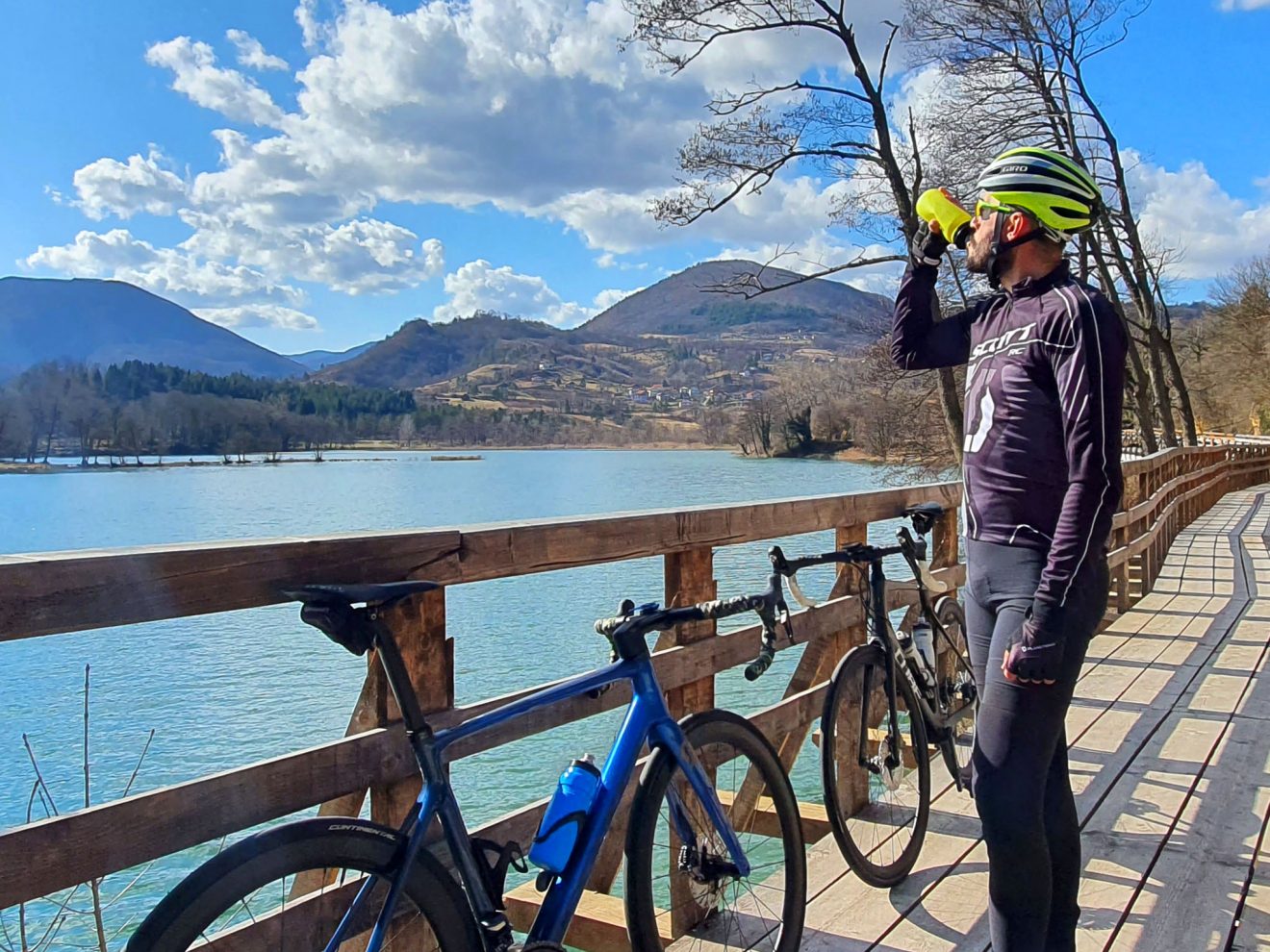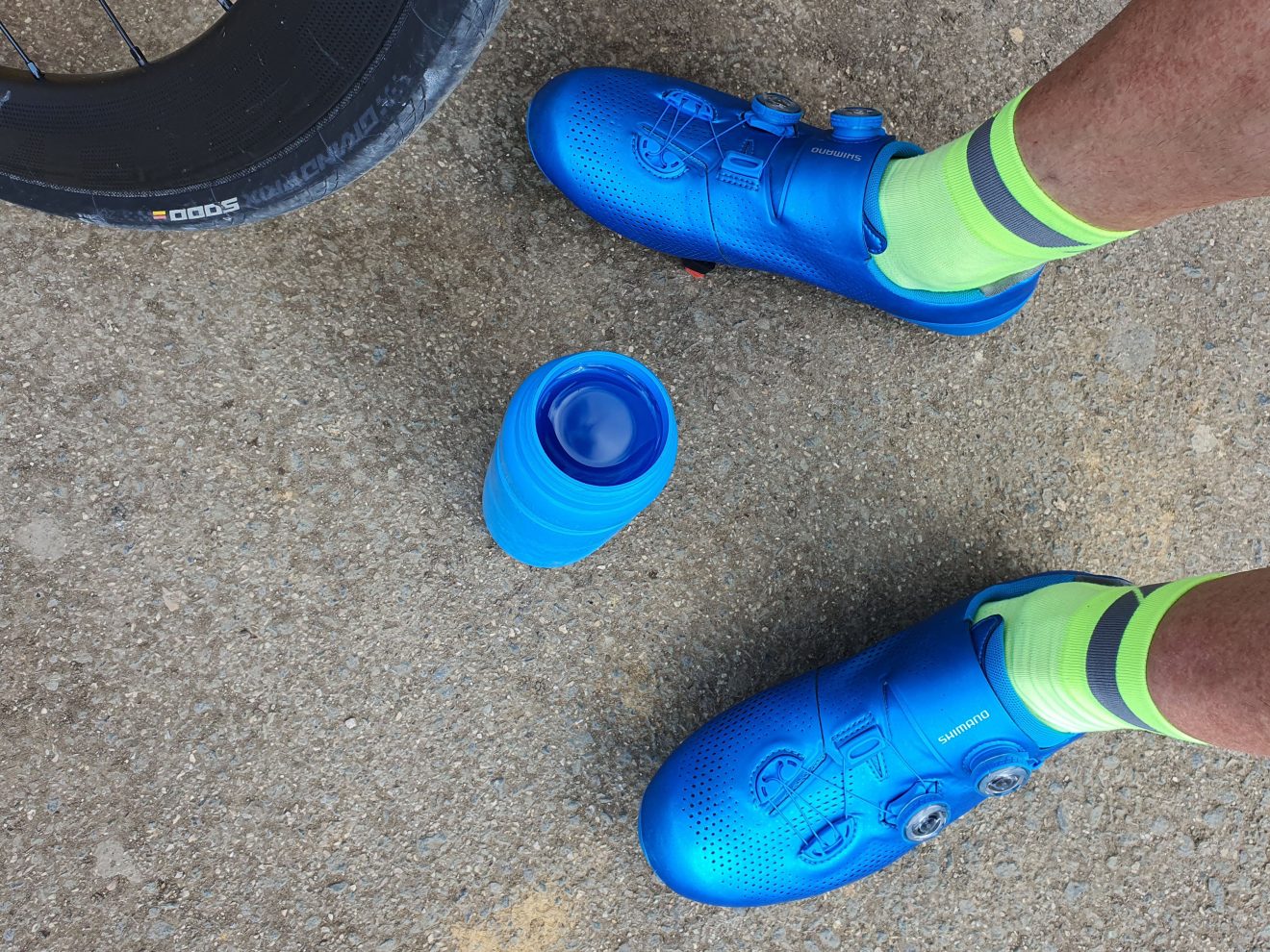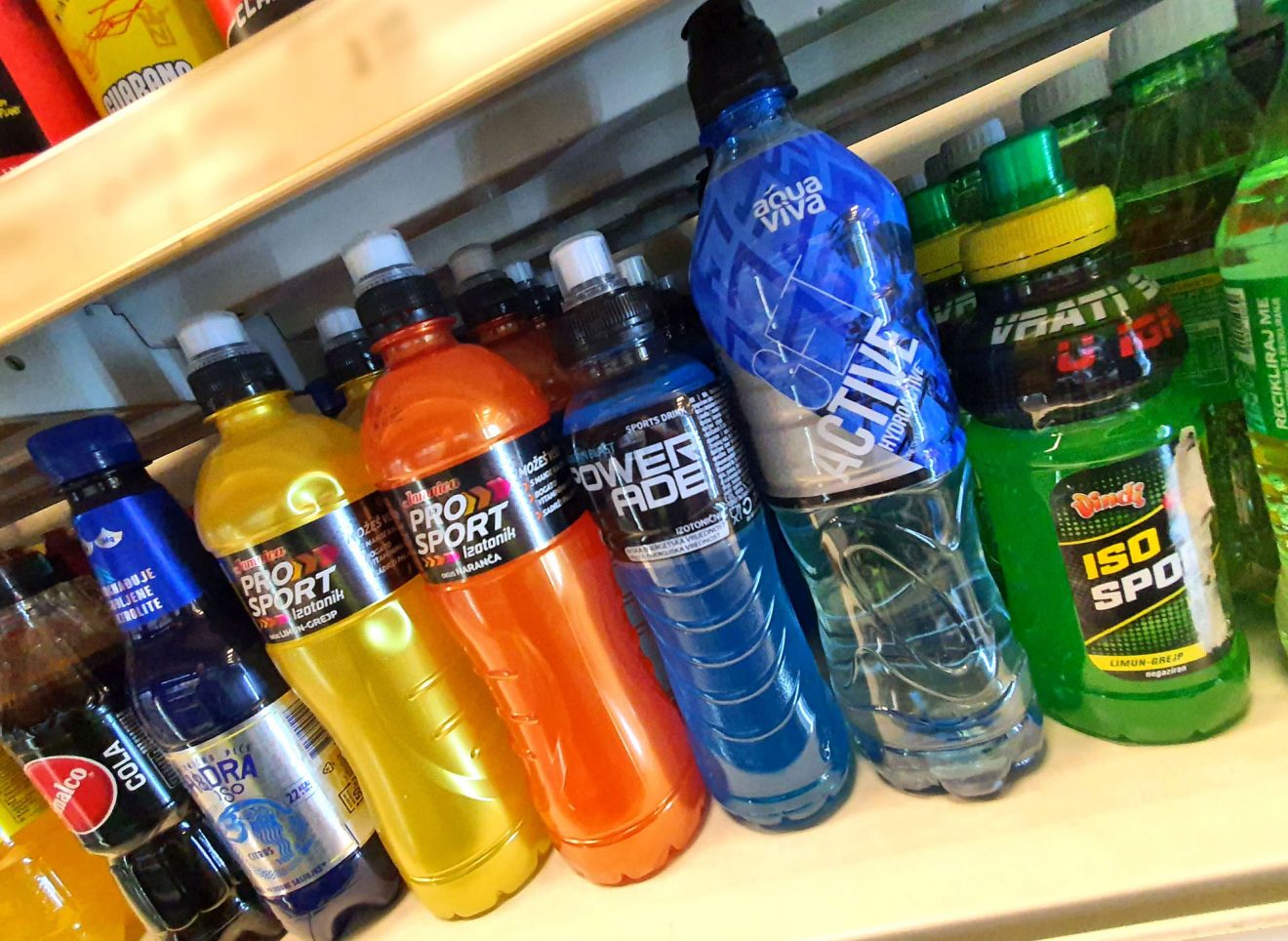Thousands have lived without love, not one without water.
– W. H. Auden
How to show others that you know absolutely nothing about the human body without saying a word? Simple – in the summer heat, wear a polyester cape while running or similarly dress in an inappropriate way during some other physical activity.
“Melting the fat”
Probably guided by the image of a lamb “sweating” on a spit, a surprisingly high number of people think that sweating is actually the conversion of fat deposits into a liquid state and thus lose weight or – as the subtitle “expertly” says – melt fat. There is no sense in entering into any discussion at all with people who are so ignorant of the matter.
On the other hand, I have come across bizarre statements that the need for water and its consumption show weakness and are a feature of exclusively recreational cyclists – which also makes no sense to comment at all.
If it is not clear to someone – the topic of this article is to avoid dehydration at all costs, because it can greatly reduce the quality of your rides and even be disastrous for you as a living being. However – even most people who understand that the sweat that the body expels is actually a lost fluid that needs to be replenished, don’t actually understand that water is not enough for sports like cycling. At the same time, it should be added that it is possible to dehydrate even in cold weather, when the outside temperature doesn’t make you sweat as much, so you do not pay much attention to it.

There’s no life without water
OK – if you go out to just spin away for an hour, then one bottle of plain water is enough. After all, what the brain and body want the most when we are thirsty for any reason (except when it comes to the cowboy in the salon, who orders whiskey when he’s thirsty) – is plain water. And not just for drinking – we need water when sweat gets in our eyes, when we get sunglasses manky or get our hands dirty because of replacing a punctured tire or chain that fell off the chainring, but also when we eat chocolate or some other food. So, we need to have one bottle of plain water with us and have it always. By “always” I don’t even mean just when riding a bike, but that it is necessary to have water with you during any physical activity, be it hiking, running, rafting, picking apples and even just lying on the beach.
A small digression – although it is not convenient to talk about it – regardless of the fact that you may need to urinate during or after a ride, it does not mean that you have excess water in the body. Moreover, the color of the urine will signal the state of your body – extremely dark urine indicates dehydration, while in a situation where, say, you’re chilling somewhere in the shade and drinking liquid all day – your urine will probably look like water.
But let’s get back to cycling. If you are going on a longer and/or more intensive ride, then not only is it not enough to have one bottle with you, but it is necessary for the other bottle to contain something a little more useful than ordinary water.

A rational athlete-beginner will evolve over time in relation to the one who runs in a cape and it will be clear to him that it is very important to make up for lost fluid but he will very soon find himself in trouble for other reasons. When he discovers the charms of longer rides (and in this context I mean ride of 2-3 hours), regardless of the fact that he ingests water – and almost certainly in insufficient quantities – it is also most likely that he will not be eating anything. We will deal with the topic of food on rides in the next article from this series but for now let’s say that there will be a short-term calorie deficit, i.e. a specific lack of carbohydrates and a drop in blood sugar.
Basically, he has now found himself in a situation where he is both hungry and thirsty and needs to return home – so the hero from our story will most likely reach for the “black gold”. No, I don’t mean oil but a carbonated drink full of the worst sugar and artificial colors. Such drinks are a great “lifter” and truth be told – sometimes we (seemingly more serious cyclists) reach for it as a “last minute rescue”, that is, when we did a very hard ride, spent a lot energy and need fast sugar – but we do that only in a situation where we have an easy half hour of pedaling remaining to return home.
However, for this reason, our enthusiastic cyclist, carried by euphoria on the wings of sugar, will eventually get even more badly dehydrated (because the body will use some water to process the previously ingested sugar), after half an hour his blood sugar will drop even more drastically and then he will end up with muscle cramps on some hill (due to both dehydration and physical unpreparedness). When he finally gets home, the family will tell him to “leave that nonsense”… and so we have lost some future Chris Froome.
Isotonic drinks
If you refused to give up your intention to ride longer and faster (chapeau!), you were sitting at home thinking “there must be a way”, headed to a better equipped market and grabbed a bottle of a strangely colored drink with an illustration of an athlete on the label – you’re going the right way! A typical isotonic drink contains various vitamins and minerals (including salts) and few carbohydrates, although mostly sugar. In any case, such drink is designed to compensate many elements that are lost through sweating, in addition to the liquid itself.

Of course, as these drinks were created for the masses, they are not as efficient as they can be, nor is it economical (nor ecological) to constantly buy plastic bottles of 500 or 750 ml and pour them into your water bottle. At this moment, you are on the verge of discovering that there are powdered isotonic drinks, which represent a much better value, are easier to store and you can dose them as you wish. Probably the cheapest such drink you can get, which I also regularly use for some not overly demanding rides, is dm’s Sportness Iso-Drink – which I guess is the same as any other supermarket brand.
However, this is just the beginning and there are brands that are even more focused on more active people and athletes. You have probably heard of brands like Isostar and Enervit. The isotonic powder segment is not particularly represented in the market where I live but fortunately we have a quality option – ISO PLUS from Olimp, which I use on more intense rides.
Hypertonic – carbohydrate drinks
You just thought that you have mastered this topic and that you are ready for any kind of riding, when this strikes you – classic isotonic drinks are not always the best choice. As we know, during the rides, we have to compensate for the calories burned, primarily from carbohydrates as a source of energy and these should be higher quality (so-called slower) carbohydrates, unlike sugar that we find in soft drinks and isotonic drinks.
So, for longer rides or rides on which we spend ourselves more, in addition to food (which we will talk about in the next article), it is necessary and practical to consume carbohydrates through the use of drinks indented for this purpose, which are based on starch. You may have heard of maltodextrin, which can be neutral in taste or with some aroma. I use neutral Battery Maltodextrin, which I mix into the isotonic drink and so I get a cheap version of the carb drink. Again, if I want something of better quality, then I use Olimp’s Carbonox, which is enriched with a number of additional ingredients. If you have the opportunity to get Vitargo – that is also a fantastic choice.
The feature of carbohydrate drinks is that they can be used both before and after rides, for storing and replenishing carbohydrates, i.e. energy, so keep this in mind when calculating with the time available for preparation for training, as well as the characteristics of the planned ride.

Hypotonic – electrolyte drinks
But that’s not all – if you call now, you will also get a free set of electrolytes! Now you’re wondering why would you need it whether it has anything to do with electricity.
You must have been in a situation where the outside temperature is extremely high, the air flow warms you up instead of cooling you and your mouth dries every few seconds. If you haven’t – you will, because the summers are inevitably getting warmer. Basically, in such a situation, the body expels sweat in extreme quantities, but you don’t even feel it because the hot air is instantly drying you as if there is a huge hairdryer in front of you. However, what remains as proof of the body’s struggle with the high ambient temperature after the end of the ride are the visible deposits of salt on the jersey, which literally show you how much you have spent yourself.
Another problem, in addition to the great loss of many substances important for the proper functioning of the body, is that that plain water, in the amount you try to ingest because you are constantly thirsty, will begin to cause nausea and you will no longer have anywhere to physically store in anyway.
Now let’s go back to electrolytes – they are a set of minerals, primarily sodium, potassium, chloride, magnesium and calcium. These drinks are designed to rehydrate you faster and better than pain water, especially because electrolytes are extremely important for the overall balance and movement of water in the body. These drinks are mostly calorie-free, in order for the body to achieve maximum water absorption, although there are also electrolyte drinks with the addition of calories, i.e. carbohydrates.
Summa summarum
As for the types of drinks, there are many other types of specialized drinks that are either not closely related to cycling or at least not too important for the purpose of this article concerning hydration while riding and we will also not focus on “energy drinks”, which are a mix of sugar, caffeine, taurine and CO2.
Another thing, if you piece the puzzle of everything you have learned so far and review the declarations of different types of products, you will notice that not everything is so “black or white” and that there are many overlaps in their composition. However, the ratios of ingredients make a big difference and you will only notice this by trying out the drinks on different kinds of rides. In that way, you will be able to determine what hydrates you best in which situation, whether you lack energy in a certain scenario or your stomach feels bloated, as well as which specific drink sits well with you.
You should keep in mind that these focused drinks are made so that they taste good when you perform physical activity, especially high intensity, so they are not necessarily tasty to sip at home. E.g. electrolytes can be quite bland, but they do a great job in the situations for which they are intended. And of course – there’s no point in discussing individual preferences, so be prepared that it can happen and that some drink, which everyone praises, is so repulsive to you that you would “rather die of thirst”.
However, the point is we want to survive and I hope you are a little safer on this issue because of this article :).
In the next article, we will focus on an almost equally important aspect of riding and that is eating food, so subscribe to the news.
